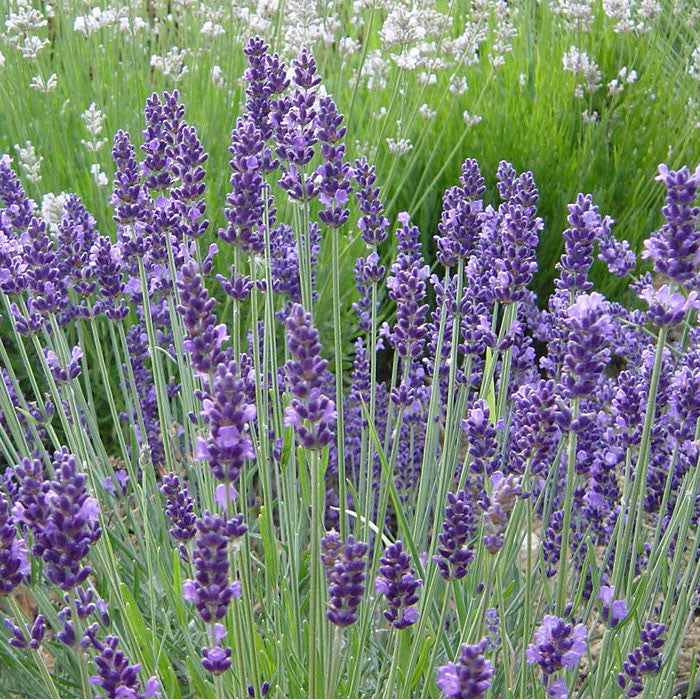Lavandula angustifolia
Family
Lamiaceae
Origin
Mediterranean
Description
Lavender is a commonly grown herb plant popular for its fragrant aroma, The herb has been used since ancient times in perfumery.. It is a great air purifier and its known as an insect repellent. The aroma can help relax the lungs and reduce the anxiety, inadvertently helping you relax and sleep better.
The tiny, tubular, mauve-blue blossoms grow in whorls of six to ten flowers along square, angular stems and form a terminal spike. These flower spikes stretch upward beyond the 12-18 inch (3.6-5.4 m) height of the shrub, blooming in summers. The blossoms are well liked by bees and a good source of honey. The needle-like, evergreen, downy leaves are a light, silver-gray. They are lanceolate, opposite, and sessile, and grow from a branched stem. The bark is gray and flaky.
Place it on window allowing it to be exposed to sunlight to help it bloom. Lavender plant presents a better replacement for an oil lamp used in aromatherapy.
Environment
Lavender is a tough plant and is extremely drought-resistant, once established.it thrives in hot, sunny locations. Choose a spot in your garden where the plant will receive full sun for at least eight hours a day.
Water it when the soil is dry an inch or so below the surface. Dampness is the enemy of lavender and if the roots of the plant become excessively damp, it will kill the plant quicker than any drought.
Lavender grows best in slightly alkaline conditions, If necessary, you can increase the alkalinity of your soil by adding a little lime.
The soil should be light, fluffy and well-aerated for optimum lavender-growing conditions.To improve soil's drainage, you can mix in a little Silica or Clay aggregate before planting. Silica sand offers many benefits: it drains well, does not cement, and is very reflective, which helps reflect sunlight onto the plant.
Little feeding is required, although a sprinkling of potash around the base of plants will encourage more prolific flowering and improved flower colour.
Place indoor lavender plants near a bright south-facing window.When growing lavender indoors, using the right size container is important. A pot for lavender should only be one to two inches larger than the plant s root-ball. In a larger pot, there s excess soil that doesn t have any roots in it to help absorb moisture. That soil can easily become waterlogged and lead to too-wet soil where the lavender roots are. The end result is root rot, which is how many indoor lavender plants die.
Landscape
Lavender is used in rock gardens and knot gardens, as an edging plant, and in cottage gardens. Its intermediate height makes it just about right for the middle row in a decorative border comprised of shorter annual flowers in the front and taller shrubs or trees in the back.





















